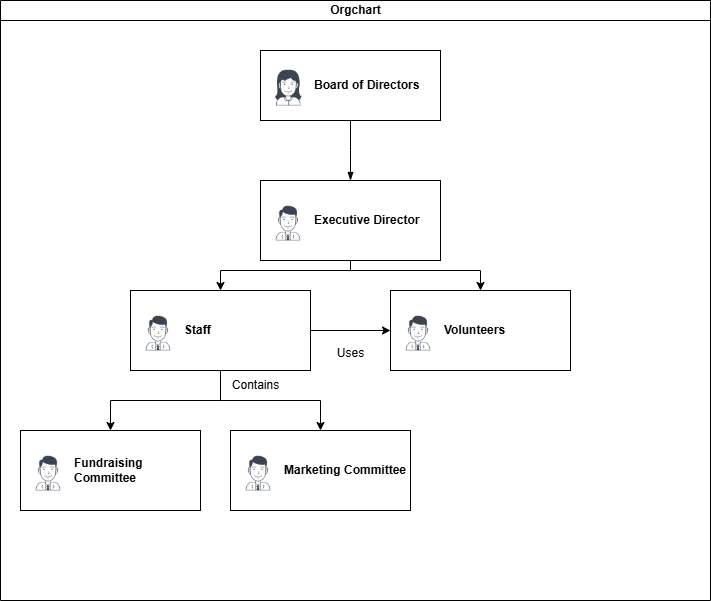Organization Structure
What is Organization Structure?
Organizational structure defines how your non-profit operates internally. It outlines roles, responsibilities, and reporting relationships — ensuring everyone knows their role and how to work together effectively.

Why Organization Structure Matters
Better Communication
A clear structure helps everyone understand who to contact for specific needs or questions. It prevents confusion, reduces miscommunication, and allows information to flow efficiently across the organization.
Increased Accountability
When roles and responsibilities are assigned, it’s easier to track progress and hold team members accountable for their work. This leads to higher performance and better project outcomes.
Builds Trust with Funders
Funders want to see that your organization operates professionally and responsibly. A well-defined structure shows transparency, strong leadership, and good governance — all of which increase your chances of securing funding.
Example Non-Profit Structure
1. Board of Directors
- Governance and Oversight
- Approves Budgets and Policies
2. Executive Director
- Leads Staff & Programs
3. Staff & Volunteers
- Handle Daily Operations
- Execute Programs
4. Comittees or Departments
- Finance, Marketing, Fundraising, etc.

Tips for Structuring Your Organization
Your organizational structure should always reflect your mission. Before creating roles or departments, make sure you have a clear understanding of what your non-profit is trying to achieve. The structure you build should directly support those goals, not distract from them.
Every person involved in your organization should know exactly what their responsibilities are. From board members to volunteers, clarity prevents confusion and ensures accountability. Having written role descriptions can help everyone understand how they contribute to the bigger picture.
A healthy organizational structure creates a natural flow of communication and decision-making. People should know who they report to, who approves decisions, and where to go when problems arise. This structure helps avoid miscommunication and keeps your team working efficiently.
Good structure is not just about people — it’s about systems. Document policies, procedures, and responsibilities. This makes transitions smoother when staff changes happen and ensures long-term stability even if key people leave.
Tips:
- Define Clear Roles and Job Descriptions
- Maintain Updated Organizational Charts
- Review Structure Regularly
- Communicate Frequently
- Ensure Board and Staff Collaboration
